PEACE AND QUIET
This healthy flock of wild turkeys was spotted at a local cemetery this week enjoying solitude among the gravestones. Photo by Heidi Sutton
Send your Photo of the Week to [email protected]
PEACE AND QUIET
This healthy flock of wild turkeys was spotted at a local cemetery this week enjoying solitude among the gravestones. Photo by Heidi Sutton
Send your Photo of the Week to [email protected]
By Scott Ferrara
Three Village Historical Society partnered with the Setauket United Methodist Church in East Setauket June 22 for the latest cemetery cleanup event.
The historical society has recently reformed its Cemetery Committee to address the conditions of the 20 cemeteries in the area. These committee projects invite community members to help in the organized cleaning of cemetery grounds, correcting leaning or fallen gravestones, and using professional methods and materials to clean gravestones.
Participants in the program previously attended the Cemeteries 101 workshop at TVHS headquarters to learn the basics of Long Island cemetery history. They received hands-on lessons in the proper application of D/2, a biodegradable and eco-friendly chemical compound that removes stains caused by mold, algae, lichens and air pollutants. Participants, additionally, learned the do’s and don’ts of working with different types of headstones, and what kinds of permissions are needed to organize a gravestone cleaning project.
The Cemetery Committee has taken on varying duties over the past four decades, including the mapping and recording of headstones, cemetery cleanings and the organizing of numerous Eagle Scout cemetery restoration service projects. The current goals of the committee are focused on addressing the many headstones in need of cleaning and repair to preserve these cultural resources, and to create an updated database to aid local history and genealogical researchers.
The most recent project invited workshop attendees to participate in the organized cleaning of the Setauket United Methodist Church graveyard. The graveyard dates to the mid-19th century, and includes gravestones of many notable families in Three Village history such as the Terrells, Van Brunts, Darlings and Bryants — all of whom were early founders and patrons of the church.
Volunteers and guests at the cleanup day included current residents of historic homes and communities once lived in by people buried at this cemetery.
Cemetery Committee chair, Robert Von Bernewitz, remarked that the D/2 cleaning solution applied to the gravestones will continue working over the next few months, slowly breaking down stains and growths.
Those who wish to participate in future cemetery cleaning projects should contact TVHS, and follow its social media and newsletters for future announcements. The website is: www.threevillagehistoricalsociety.org.
Scott Ferrara is exhibits & collections coordinator at Three Village Historical Society.
A time honored tradition for Memorial Day, Long Island National Cemetery, 2040 Wellwood Ave., Farmingdale seeks volunteers to place American flags on veteran’s graves on May 25 at 8 a.m. and to return to the cemetery on June 1 at 8 a.m. to remove the flags. No registration required. For more info, call 631-454-4949.
Volunteers are also needed to place flags at Calverton National Cemetery, 210 Princeton BLvd., Calverton on May 25 at 9:30 a.m. and to pick up the flags on June 1 at 9:30 a.m. and roll them up in bundles of 20 so they can be put into storage for the following year. Rain date is June 2. To register, contact Frank Bailey at [email protected] or call 631-732-4529.
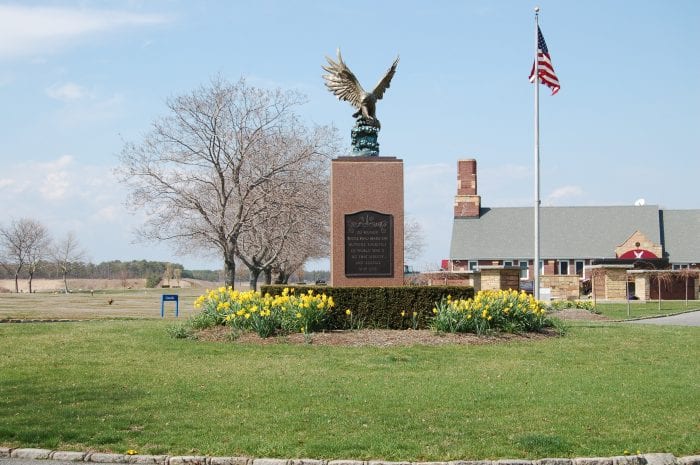
Police are currently looking for the person or people involved in allegedly stealing a statue from the Washington Memorial Park, a cemetery in Mount Sinai.

Police said the 4-foot tall bronze eagle statue near the entrance to the park, located at 855 Canal Road, was stolen from atop its plinth Nov. 13 sometime between 5 and 7 p.m. The granite base for the statue was apparently damaged during the theft.
A representative from Washington Memorial Park said the eagle represents the parks emblem, and they were “very upset and surprised” to have seen it stolen. The park is located in a relatively quiet residential area, and has not seen any such acts in recent memory. The park rep said they found pieces of the statue on the ground, leading them to believe it must have fell as it was being taken.
The park has been around since 1926, and the front area where the statue was located was developed in the 1940s.
The park representative stressed that their biggest concern is for families and their loved ones’ graves. There is security at night and gate access to the park is shut after hours. The rep stressed has been no tampering of graves at the park.
Suffolk County Crime Stoppers offers a cash reward for information that leads to an arrest. Anyone with information about these incidents can contact Suffolk County Crime Stoppers to submit an anonymous tip by calling 1-800-220-TIPS (8477), utilizing a mobile app which can be downloaded through the App Store or Google Play by searching P3 Tips, or online at www.P3Tips.com. All calls, text messages and emails are kept confidential.
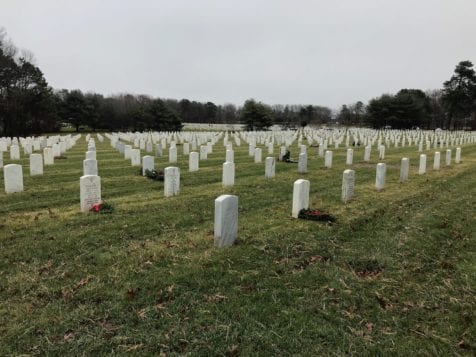
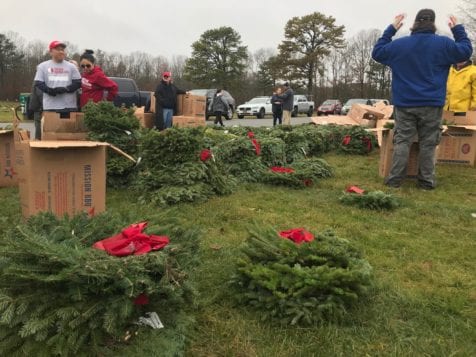
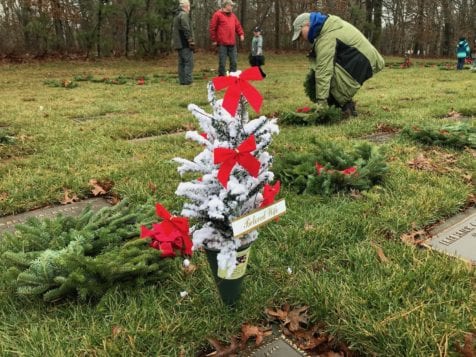
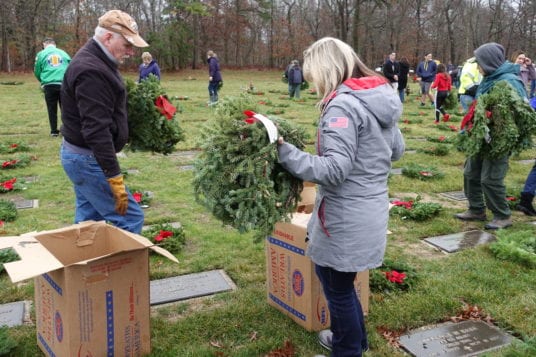
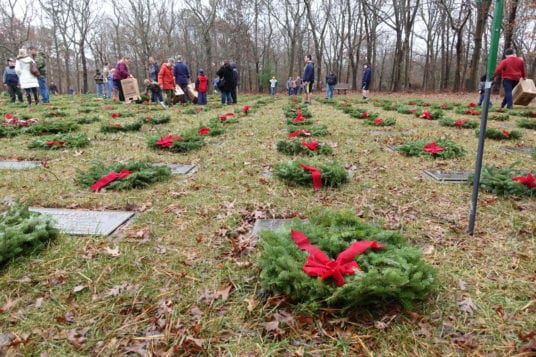
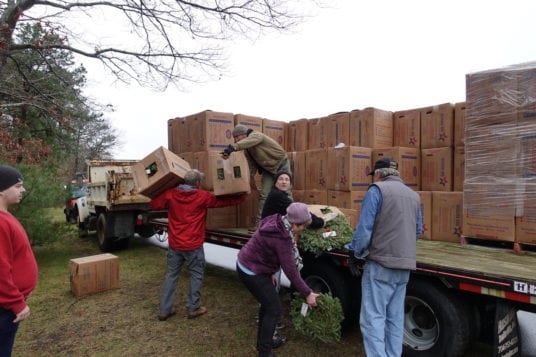
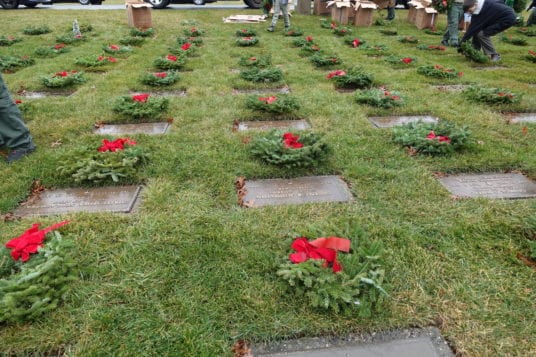
Thousands of volunteers gathered at Calverton National Cemetery Dec. 15 to pay tribute to fallen service members on National Wreaths Across America Day. The event, organized by the Support Committee at Calverton National Cemetery, involved over 3,000 volunteers including veterans, Boy Scout troops and community members who placed 44,000 wreaths in just 90 minutes.
Wreaths Across America is a national organization that coordinates wreath ceremonies at 1,400 locations in all 50 U.S. states, at sea and abroad.
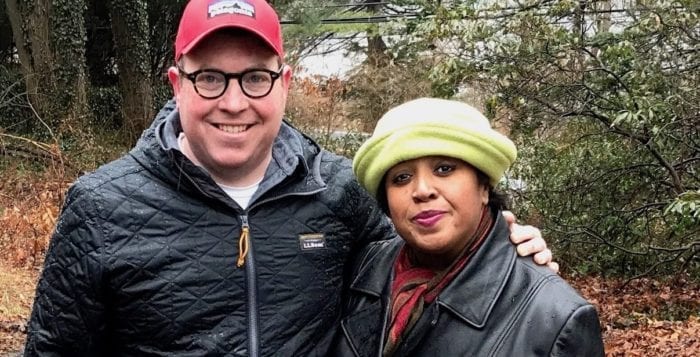
Huntington Town officials are seeking the public’s help in putting back together forgotten pieces of African-American history in Cold Spring Harbor.
Located off the east side of Harbor Road, there is a small plot of town-owned land that’s only known as Jones Cemetery. Huntington Town Historian Robert Hughes said it is named after the Jones family that owned extensive pieces of land in the area in both the current towns of Huntington and Oyster Bay through the 20th century. They’re also famous for starting Cold Spring Harbor Whaling Company.
“We knew he was most likely buried at that cemetery. We could not find it. There was a lot of brush covering up the graves and headstones.”
—Denice Evans-Shepard
Hughes said he believes most, if not all of those buried in the cemetery are African-Americans who once worked for the Jones family — some as slaves.
“The Jones Cemetery is one of 56 historic cemeteries located throughout the Town of Huntington,” Hughes said. “Unfortunately, many have become overgrown over the years. Other priorities often take precedence over cemetery cleanups.”
Hughes, Huntington’s director of minority affairs Kevin Thorbourne and volunteers from St. John’s Church in Cold Spring Harbor cleaned up the cemetery grounds March 3. Their work revealed about three dozen graves marked only by simple field stones and two traditional marble headstones.
One of the marked headstone is for Alfred Thorn, an African-American who worked for Charles Jones, and then Oliver Jones as a coachman. Thorn died Feb. 3, 1900, at age 55. The other marble headstone is for Patience Thorn, who is believed to be Alfred’s mother, according to Hughes. The identities of the three dozen others buried in the cemetery are unknown.
Denice Evans-Sheppard, the new director of the Oyster Bay Historic Society, said she has reason to believe one of her ancestors is buried in Jones Cemetery.
“It’s like finding the missing piece to the puzzle,” she said.
Evans-Sheppard said growing up she was told her family originally worked on the Jones family estate. Her great-great-great-grandfather, Lewis Carll, once worked as one of the coachman for the Jones family. He’s the only member of her family not buried in Oyster Bay, according to Evans-Sheppard.
“To to learn who was buried at Jones Cemetery will help us put the missing pieces of Huntington’s history back together.”
— Chad Lupinacci
“We knew he was most likely buried at that cemetery,” she said. “We could not find it. There was a lot of brush covering up the graves and headstones.”
She was invited to tour the grounds with Gideon Pollach, pastor of St. John’s Church; Hughes and Thorbourne after the cleanup March 7.
“It was beautiful to finally make that connection,” she said.
Evans-Sheppard said she knows some descendants of other African-American families who worked for the Jones, including the Jacksons, the Seamans and her own, the Carlls. Many related individuals still live in nearby areas of Huntington, Oyster Bay and Amityville, she said.
Along with Huntington Town officials, Evans-Sheppard is hoping families will step forward to help identify their remains.
“The Town of Huntington has a rich history of contributions from the African-American community, and to learn who was buried at Jones Cemetery will help us put the missing pieces of Huntington’s history back together,” said Supervisor Chad Lupinacci (R) in a statement.
Anyone with information on individuals who may be interred in the cemetery is encouraged to contact Hughes at 631-351-3244 or email at rhughes@huntingtonny.gov
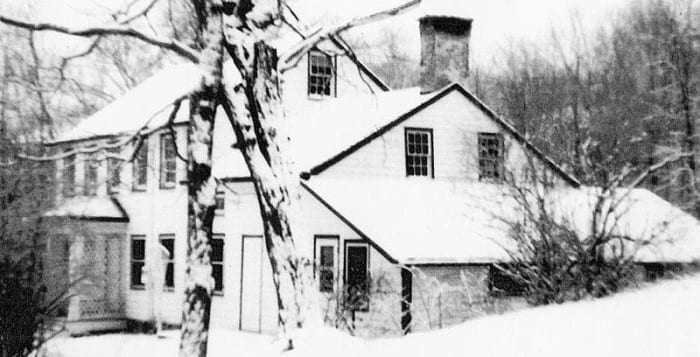
“Silent but smiling, Henry hit William again and again, leaving the young man lying senseless on the carpeted floor.”
It’s a story that unfolds like a dark novel. A member of a prominent family in a quiet, seaside village snaps one day and beats his relatives to death at the home they shared, splattering blood everywhere, before hanging himself in the backyard barn. A child who narrowly escapes the massacre grows up to be a successful businessman but will remain forever haunted by his memories.
The 1857 murder-suicide on Beach Street shocked the Port Jefferson community and would likely still shock residents today.
It could have all started with the reportedly turbulent relationship between Henry Walters and his wife of three years, Elizabeth Darling-Walters. Or perhaps it was the feud between Walters and his wife’s son-in-law William Sturtevant that was boiling into legal action despite the two living under the same roof.
According to a narrative written by former Port Jefferson historian Ken Brady and published in the Port Times Record 10 years ago, the gossip around the village was that Walters, 57, and Darling-Walters, 46, fought frequently, with things so bad that they did not share a bed. The husband, a carpenter and a farmer, felt ignored and was “worried that his wife would leave her substantial estate to Martha Jane and Emmet,” her children from her first marriage to the late Matthew Darling, one of the founders of the nearby Darling Shipyard on the west side of the harbor.
The Darling family was originally from Smithtown but built their Port Jefferson shipyard in 1832 and quickly became prolific, building 13 ships during that decade alone.
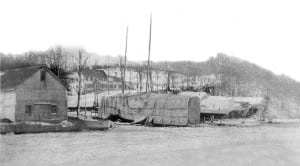
If the chatter is true, Walters showed warning signs of a violent outburst. Brady wrote, “In a creepy attempt to win back his wife’s affections, Henry bought a shroud from local coffin maker Ambrose King. Walters often wore the white burial sheet about the homestead, threatening to commit suicide if Elizabeth did not return his love.”
At the same time, the farmer’s feud with Sturtevant and his father, fellow ship carpenter Amasa Sturtevant, who also lived on Beach Street, had reached a climax the day before the son-in-law’s murder — according to Brady, Walters received a letter from William Sturtevant’s attorney, Thomas Strong, warning him to “retract statements he had made about young Sturtevant” by Nov. 21, the day of the bloodshed, “or to expect a slander suit.”
That Saturday morning in the white, one-and-a-half-story home, Darling-Walters was eating breakfast with the young Sturtevant couple when Walters, finished feeding the horses, grabbed an iron bar and rushed into the dining room. According to Brady, the son-in-law was bludgeoned to death first with blows to the head, “splattering brain matter on the walls and furniture.” Then Walters went after his wife and 20-year-old stepdaughter, who both fled outside.
“Elizabeth tried to shield herself from the savage blows, but soon fell to the ground mortally wounded, her skull fractured and dress soaked with blood.”
Martha Jane Sturtevant was spared when Matthew Darling’s younger brother, Beach Street resident John E. Darling, heard his seriously injured niece’s screams. Brady said when Walters caught sight of the man, he went back inside and looked for 11-year-old Emmet Brewster Darling. But the boy was hiding under a bed in the attic and, while his stepfather was in another room, ran down the stairs and escaped Walters’ pursuit.
“Her barn was haunted by the ghost of Henry Walters, whose terrifying screams supposedly echoed over the harbor.”
That’s when Walters went into the barn, put a white handkerchief over his face and hanged himself. According to Brady, the murderer had neatly folded his coat and vest and placed them on a bench.
Despite his traumatic experience, Emmet Darling, who also went by E.B. Darling and whose first name has sometimes been misspelled as “Emmett,” grew into a productive adult. According to former Cedar Hill Cemetery historian George Moraitis, Darling took over his family’s shipyard and married twice before his death almost 30 years after the murders.
His elder sister moved on to a degree — in his written history “Forevermore on Cedar Hill,” Moraitis noted that Martha Jane later remarried, to Capt. Oliver Davis. But Brady said the woman lived in the same house where her mother and first husband were murdered until her own death in 1906, “despite claims from some villagers that her barn was haunted by the ghost of Henry Walters, whose terrifying screams supposedly echoed over the harbor.”
No one else will live in the murder house, however — both the home and the shipyard property have been torn down and rebuilt. The Port Jefferson Village historical photo archive notes that the Port Jefferson Fire Department burned down the home during a drill 60 years ago, on Jan. 22, 1956, and a Suffolk County sewer facility took its place. The Darling shipyard, on the other hand, eventually became a power plant.
Darling-Walters is buried at Cedar Hill with her first husband and daughter, and William Sturtevant at his own family’s grave site there. Emmet Darling rests at Oak Hill Cemetery in Stony Brook with his second wife, Julia A. Oakes.
According to Moraitis, the killer’s burial place is unknown.
Historical grave markers and headstones were damaged earlier this month and police are searching for whomever is responsible.
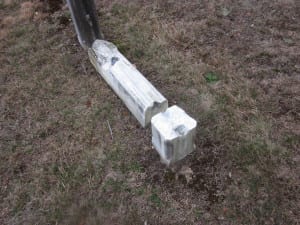
The desecrated graves were at Lake Ronkonkoma Cemetery on Hawkins Avenue, according to the Suffolk County Police Department, and include some grave stones dating back to the Civil War.
Police said Tuesday that the suspect or suspects did the damage between Jan. 4 and 8, desecrating 14 grave makers and headstones.
Suffolk County Crime Stoppers and detectives from the SCPD’s 4th Squad are looking for the public’s help to identify and locate the cemetery vandals. Anyone with information is asked to call Crime Stoppers anonymously at 800-220-TIPS.
Crime Stoppers offers a cash reward of up to $5,000 for information leading to an arrest.
The cemetery is located at the corner of Hawkins Avenue and Smith Street in Lake Ronkonkoma, behind the United Methodist Church.
